Illustrations by Veronica Bravo and Ariana Torrey, USA TODAY
As the country continues to report more than 5.5 million new coronavirus cases each week, health experts say coming across the highly transmissible omicron variant isn't a matter of "if," but "when."
The Centers for Disease Control and Prevention urges Americans to follow their latest quarantine and isolation recommendations if they know they've been exposed to the virus, but many find the guidelines confusing.
Health experts understand why people are confused, as the evolving data continues to change CDC recommendations based on symptoms, testing and vaccination status.
But the agency's director, Dr. Rochelle Walensky, said at a U.S. Senate committee hearing Monday that the updated guidelines are based on "over 100 studies collected over the past two years" and can help prevent further spread of the virus.
According to the Department of Health and Human Services:
Quarantine separates and restricts movement of people who were exposed to COVID-19 to see whether they become sick.
Isolation separates a person infected with COVID-19 from people who are not sick.
Here's a breakdown of CDC recommendations to help you navigate these guidelines, and what you should do if you've been exposed to COVID-19.
I'm recently vaccinated and/or boosted and was around someone with COVID-19. What should I do?
If you are vaccinated and boosted within the past six months, the CDC says you don't need to quarantine or isolate if you've been exposed to the virus. You also don't need to quarantine if:
- It's been less than six months since you completed the primary series of mRNA vaccine doses from Pfizer-BioNTech or Moderna .
- It's been less than two months since receiving the Johnson & Johnson vaccine.
Although you don't have to quarantine, the agency still recommends:
- Wearing a mask around others for 10 days. Do not go to places where you are unable to wear a mask.
- Watching for symptoms for 10 days after exposure.
- Avoiding travel.
- Avoiding people at risk of developing severe illness from COVID-19.
The CDC recommends getting tested five days after coming into close contact with someone infected with COVID-19. Day 1 is considered the first full day after exposure.
If you test negative, continue wearing a mask for an additional five days.
I tested positive for COVID-19. What should I do?
Regardless of vaccination status, the CDC recommends those who tests positive for COVID-19 isolate for five days.
If you haven't already, find a well-fitting mask to wear at home to minimize the risk of spreading the virus to your household.
The CDC recommends monitoring your symptoms throughout the isolation period.
You can leave isolation if your symptoms resolve after five days and you're without fever for at least 24 hours. The agency still recommends wearing a mask for an additional five days.
If you still experience symptoms after five days, CDC guidelines say you should stay in isolation until they're gone.
I'm not vaccinated or haven't gotten a booster. What should I do if I'm exposed to COVID-19?
The CDC recommends Americans should quarantine if they've been exposed to COVID-19 and fall under one of the following vaccination statuses:
- Not vaccinated.
- Not boosted, and it's been more than six months since getting the second dose of Pfizer-BioNTech or Moderna vaccines .
- Not boosted, and it's been more than two months since getting the Johnson & Johnson vaccine.
During quarantine:
- Stay home and away from people for five days.
- Avoid travel.
- Avoid being around people at high risk for developing severe COVID-19.
- Monitor symptoms for 10 days after exposure.
If you develop symptoms during quarantine, get tested immediately. Even if you don't develop symptoms, the CDC recommends getting tested after five days.
If you test negative for COVID-19, you can leave quarantine but should still wear a well-fitted mask around others for an additional five days.
If you test positive, the CDC recommends isolating for five more days. During isolation:
- Do not leave the house.
- Avoid contact with others.
- Wear a well-fitted mask unless alone in an isolated room.
- Use a separate bed and bathroom from other household members.